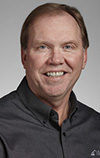A question that sometimes comes up is, “Why do farmers continue to invest and grow despite the challenges in dairy farming?”
The challenges are real, with heavy work schedules, higher costs, wide swings in profit margins, and regulatory and public pressures. People outside the industry often attribute investment decisions as simply wanting to get bigger. That’s not the case.
The reasons dairy farm families continue to invest and grow are rooted in the nature of dairy farmers and fundamental economic drivers. It is important to understand the drivers for investment decisions, both for planning on your own farm and for the industry overall. From our experience, key drivers include the following.
Innovative attitude
Dairy farmers are entrepreneurs who are energized by continuous improvement. This is reflected in their goals to improve herd genetics, enhance cow care, and generate more milk per cow and yield per acre. Investments in new technologies, equipment and facilities are often needed to achieve those goals.
Competitive cost of production
Milk is generally still priced as a commodity. To generate a consistent profit margin, farms need to manage their cost of production to keep pace with the industry. As labor, supply, equipment and facility costs rise, there’s pressure to produce more milk to spread those costs over greater production, thereby maintaining or lowering cost per hundredweight.
Older facilities
Many farms have milking parlors and barns that are 15 to 20 years old – or even older. While these facilities are well maintained, they often have limitations in size, ventilation and technology compared to newer facilities. Upgrading or replacing them in the coming years will likely be necessary to keep pace with the industry. New construction is expensive, so there’s often a need to add more cows to generate a return on the new investment.
Labor productivity
As wage rates and experience levels increase for key farm employees, increasing output per team member becomes a priority. Labor productivity is connected to older facilities, as older barns and parlors have limited throughput and adaptability to new technology. The growing interest in robotics, rotary parlors, herd management technology and cow-sorting systems is largely driven by the need to increase labor efficiency and streamline cow care and management. Improving the working environment for team members is also an important goal for these investments.
Environmental and regulatory management
Farmers have an inherent desire to protect water quality and soil health, but the costs of manure management systems and compliance with regulatory requirements are increasing. Sand separation, year-round manure storage, leachate control and new application systems all require substantial investments. These investments are often made in conjunction with expansion plans, as more production is needed to cover the added capital costs.
Generational succession and transition
This area is foundational for many investment decisions. Determining the interests of the next generation and key management team members helps frame whether the investment return period is five to 10 years or 20 to 30 years. If the next generation wants to be involved in the dairy, the focus shifts to whether the farm can generate enough profit to support multiple family members and how the senior generation can be compensated over time. The next generation may have different ideas about where to focus investment, and that needs to be considered as well.
Understanding the drivers behind major investment decisions should be a critical part of business planning. Since you likely can’t do everything at once, prioritizing investment areas is essential. Identifying your specific objectives around these drivers will help guide decision-making.
Unexpected opportunities (e.g., nearby land for sale) can arise, and it’s important to relate decisions on those opportunities to how well they align with your goals and the drivers you’re trying to achieve.
Succession and transition planning may be a key first step in your long-range plan to ensure the next generation’s perspective is included in the investment decision-making process.
From an industry viewpoint, recognizing the motivations behind investment and growth on dairy farms is essential in evaluating regional processing capacity and the need to grow dairy product demand as production increases.
This article is provided for information purposes only. Readers should consult their own professional advisers for specific advice tailored to their needs. Information contained in this article may be subject to change without notice.





